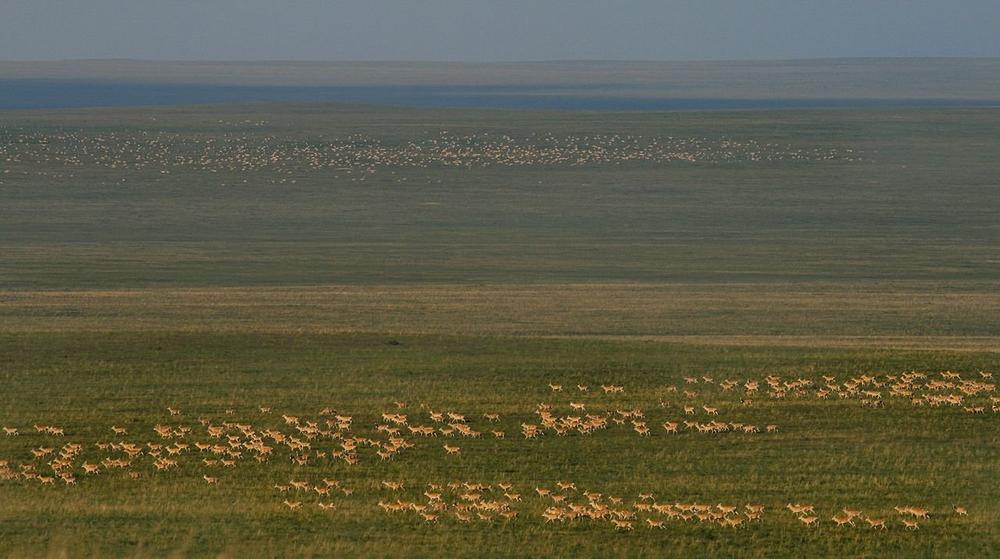“Move BON”: New Global Network for the Study of Animal Movement

Breaking News:
Sonntag, Dez. 21, 2025

Animal movement– from migrating birds, whales and gazelles to pollinators and seed dispersers – plays a central role in ecosystem connectivity, resilience, and biodiversity around the world. Tracking the animals’ paths and areas of activity provides us with important insights into the state of habitats, environmental changes, the spread of invasive species, or newly emerging diseases. While technological advances have made it possible to observe animal movements with increasing accuracy in recent decades, the majority of this valuable data has so far remained scattered, has not been recorded uniformly, and could hardly be incorporated into in biodiversity reporting and policy. The global Animal Movement Biodiversity Observation Network (Move BON for short), an association of over 50 institutions around the world initiated by the Smithsonian Institution and WILD LABS at World Wildlife Fund (WWF), aims to make this wealth of data systematically available for science and policy.
“The recent endorsement by the Group on Earth Observations Biodiversity Observation Network (GEO BON) is an important milestone,” emphasizes Dr. Aidin Niamir, Head of International Science Policy at the Senckenberg Gesellschaft für Naturforschung, and he continues, “This strengthens the international visibility of Move BON and confirms that the initiative meets the highest standards of scientific work, collaboration, and data quality. The endorsement is an important step towards closing the current gap between science and policy. With Move BON, we are connecting a global community of experts whose work will enable research results and data on animal movement obtained at Senckenberg and the partner institutions to be incorporated into environmental policy decisions in a targeted and bundled manner in the future.”
“Animal movement plays a central role in many international environmental agreements,” adds Prof. Dr. Martin Wikelski, Director of the Department of Migration at the Max Planck Institute of Animal Behavior. “However, until now there has been a lack of defined processes for translating the raw data that we obtain using state-of-the-art animal tracking methods into meaningful information for nature conservation and making it accessible for political target groups. The fact that these tools are now being created opens up completely new possibilities for projects such as Icarus at the Max Planck Institute of Animal Behavior, where we can track the migrations of thousands of animals from space.”
Move BON creates a global “network of networks” that promotes cooperation between existing projects on animal movement – across geographical, technological, and ecosystem boundaries. “A central goal in this regard is to define common standards for the collection and linking of data,” explains Sarah C. Davidson, data curator of the Movebank online platform for animal movement data at the Max Planck Institute of Animal Behavior. “Databases such as Movebank, a joint project of Senckenberg and the Max Planck Institute of Animal Behavior, already combine large amounts of data on animal movements. However, the majority of this data is not yet accessible to political decisionmakers. With Move BON, we can provide meaningful information for policymakers while at the same time ensuring the protection of sensitive data.”
“Our vision is a joint global observation system that records and interprets animal movement,” says Prof. Dr. Thomas Müller, Director of the Senckenberg Biodiversity and Climate Research Center Frankfurt, and he concludes, “This will enable us to better understand and evaluate the global development of biodiversity, predict changes, and provide targeted support for international conservation measures in line with multilateral environmental agreements such as the Kunming-Montreal Global Biodiversity Framework or the Bonn Convention on the Conservation of Migratory Species (CMS).”
Building on the founding vision and coordination from the Smithsonian and WILDLABS at WWF, Move BON currently encompasses more than 50 organizations whose research ranges from terrestrial to freshwater and marine ecosystems. The initiative was co-developed through the joint coordination of the Smithsonian Institution and WILDLABS at WWF, together with the Max Planck Institute of Animal Behavior, NASA’s Jet Propulsion Laboratory, and the Senckenberg Biodiversity and Climate Research Center.The establishment of Move BON has been made possible through generous funding support from the Smithsonian Institution’s Life on a Sustainable Planet initiative and NASA’s Jet Propulsion Laboratory.
The Senckenberg Gesellschaft für Naturforschung (Senckenberg Nature Society), a member institution of the Leibniz Association, has studied the “Earth System” on a global scale for over 200 years – in the past, in the present, and with predictions for the future. We conduct integrative “geobiodiversity research” with the goal of understanding nature with its infinite diversity, so we can preserve it for future generations and use it in a sustainable fashion. In addition, Senckenberg presents its research results in a variety of ways, first and foremost in its three natural history museums in Frankfurt, Görlitz, and Dresden.
The Senckenberg natural history museums are places of learning and wonder and serve as open platforms for a democratic dialogue – inclusive, participative, and international. For additional information, visit www.senckenberg.de.
Senckenberg – Leibniz Institution for Biodiversity and Earth System Research // Senckenberg Gesellschaft für Naturforschung
Senckenberganlage 25
60325 Frankfurt
Telefon: +49 (69) 7542-0
Telefax: +49 (69) 746238
http://www.senckenberg.de
![]()